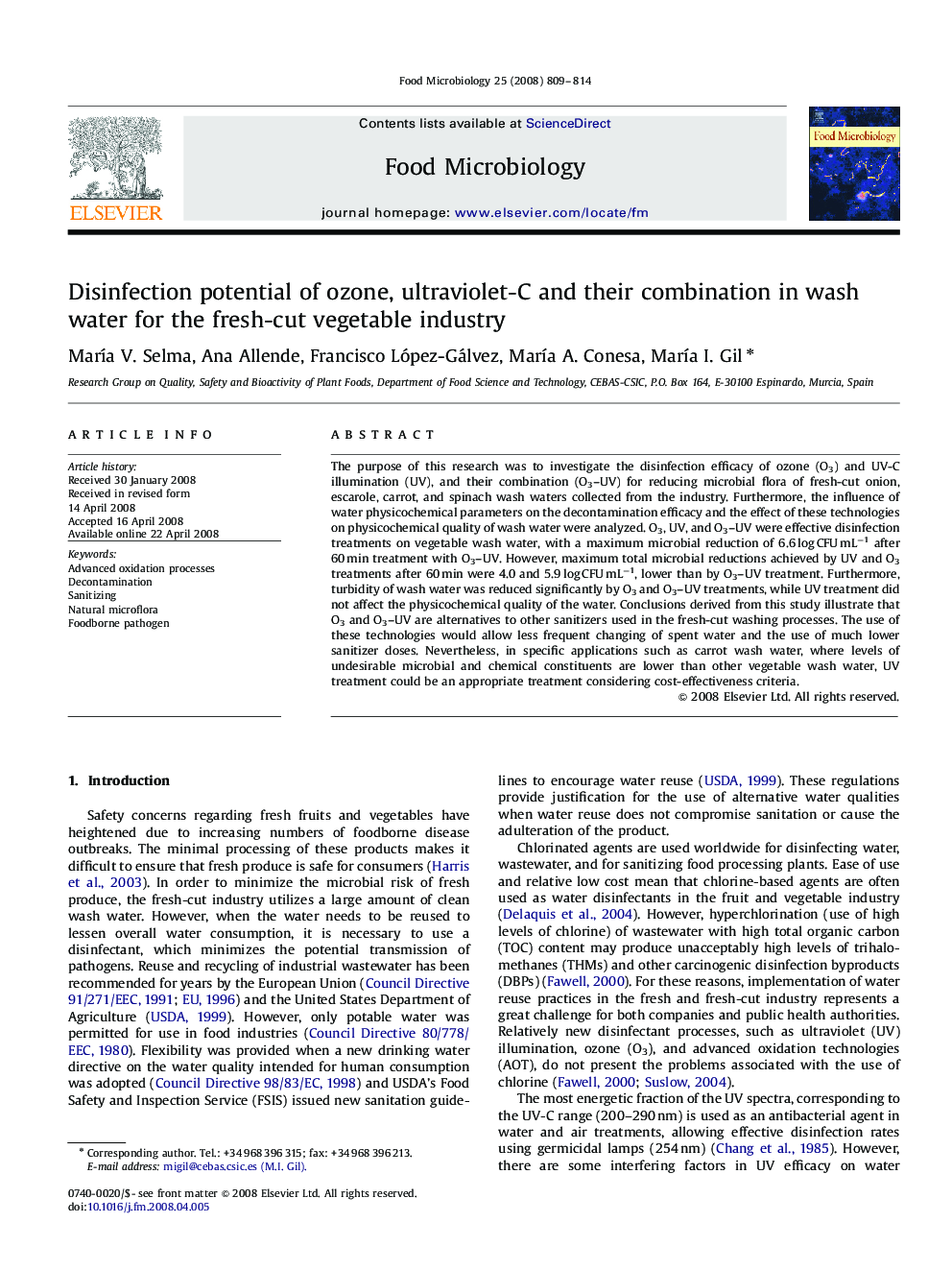| Article ID | Journal | Published Year | Pages | File Type |
|---|---|---|---|---|
| 4363709 | Food Microbiology | 2008 | 6 Pages |
Abstract
The purpose of this research was to investigate the disinfection efficacy of ozone (O3) and UV-C illumination (UV), and their combination (O3-UV) for reducing microbial flora of fresh-cut onion, escarole, carrot, and spinach wash waters collected from the industry. Furthermore, the influence of water physicochemical parameters on the decontamination efficacy and the effect of these technologies on physicochemical quality of wash water were analyzed. O3, UV, and O3-UV were effective disinfection treatments on vegetable wash water, with a maximum microbial reduction of 6.6 log CFU mLâ1 after 60 min treatment with O3-UV. However, maximum total microbial reductions achieved by UV and O3 treatments after 60 min were 4.0 and 5.9 log CFU mLâ1, lower than by O3-UV treatment. Furthermore, turbidity of wash water was reduced significantly by O3 and O3-UV treatments, while UV treatment did not affect the physicochemical quality of the water. Conclusions derived from this study illustrate that O3 and O3-UV are alternatives to other sanitizers used in the fresh-cut washing processes. The use of these technologies would allow less frequent changing of spent water and the use of much lower sanitizer doses. Nevertheless, in specific applications such as carrot wash water, where levels of undesirable microbial and chemical constituents are lower than other vegetable wash water, UV treatment could be an appropriate treatment considering cost-effectiveness criteria.
Related Topics
Life Sciences
Agricultural and Biological Sciences
Food Science
Authors
MarÃa V. Selma, Ana Allende, Francisco López-Gálvez, MarÃa A. Conesa, MarÃa I. Gil,
